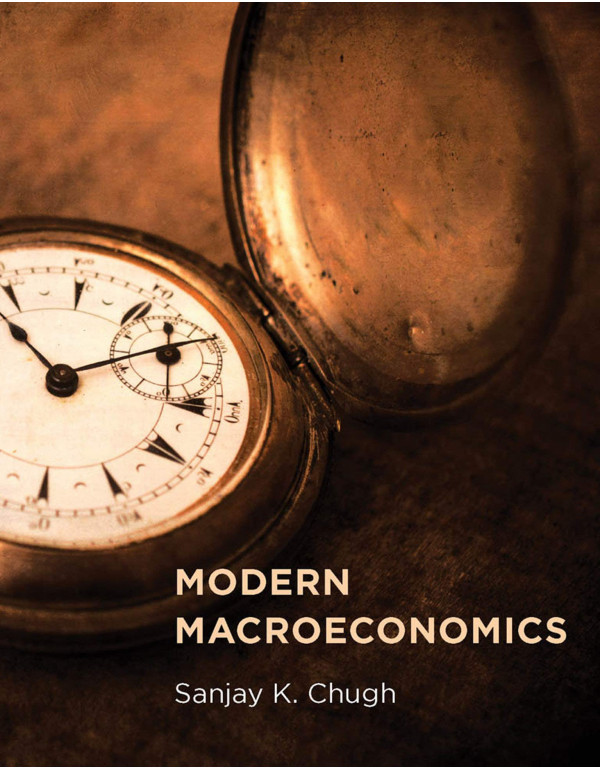A textbook that approaches modern macroeconomics through its microeconomic foundations, with an emphasis on financial market connections and policy applications.The modern study and analysis of macroeconomics begins by considering how microeconomic units—consumers and firms—make decisions, and then investigates how these choices interact to yield economy-wide outcomes. This innovative textbook takes this “modern” approach, teaching macroeconomics through its microeconomic foundations. It does so by adopting the representative agent paradigm. By modeling the representative consumer and the representative firm, students will learn to describe macroeconomic outcomes and consider the effects of macroeconomic policies. Unique in its coverage of monopolistic competition, financial markets, and the interaction of fiscal and monetary policy, Modern Macroeconomics is suitable for use in intermediate undergraduate, advanced undergraduate, and graduate level courses.
The book first introduces the building blocks of macroeconomics, the heart of which is the representative consumer. It goes on to offer a brief history of macroeconomic thought, including supply-side economics, the Phillips curve, and the New Keynesian framework. It then covers two policy applications, monetary policy and the interaction of monetary and fiscal policy; optimal policy analysis for both the flexible price and the rigid price case; long-run steady states, treating the Solow growth framework and the neoclassical growth model; a search-and-matching framework for the analysis of unemployment; and the application of the tools of modern macroeconomics to “open economy,” or international macroeconomics. End-of-chapter problem sets enable students to apply the concepts they have learned. A separate Solutions Manual will be available for students to purchase. Teaching materials, including complete solutions and slides, will be available to qualified instructors.

